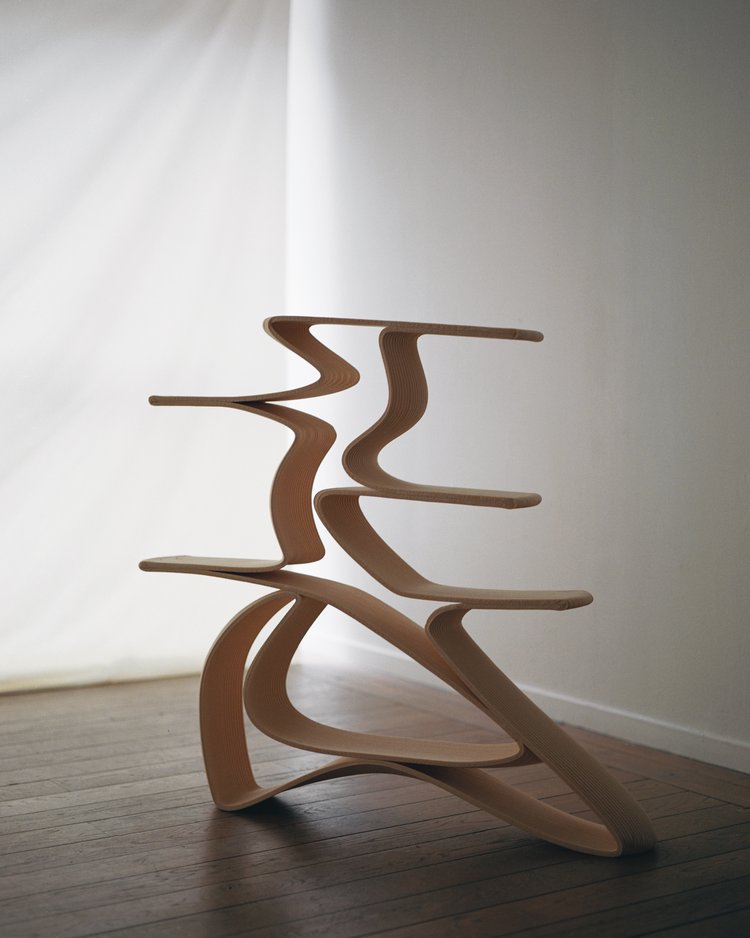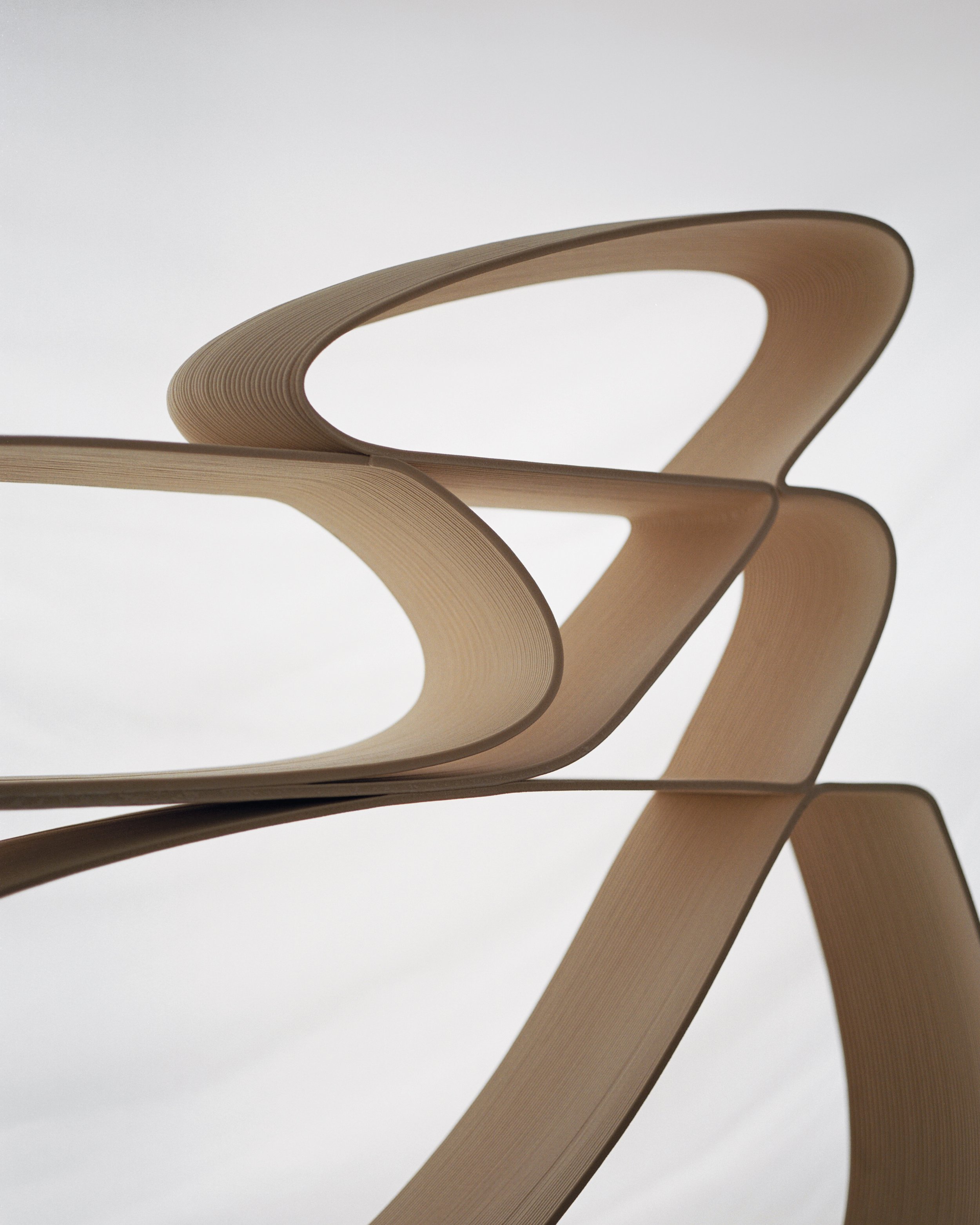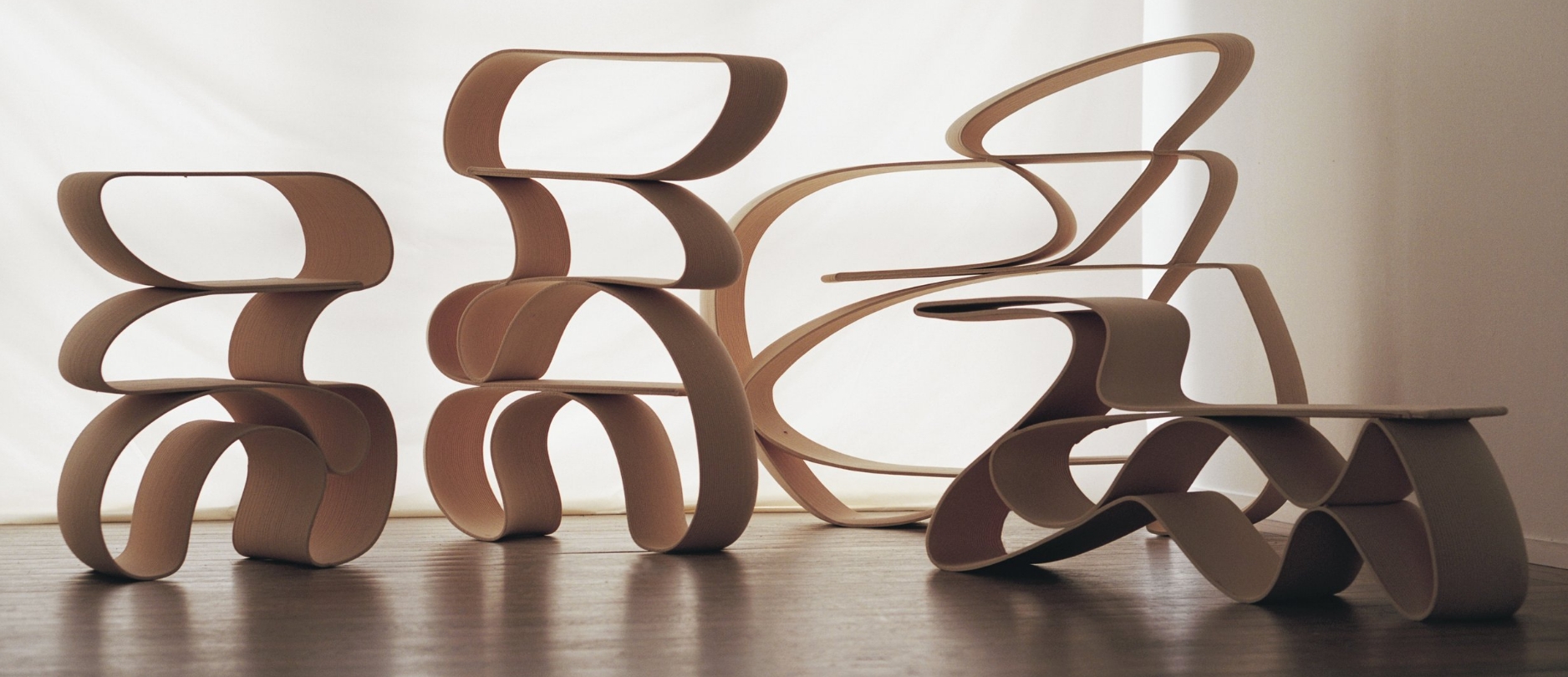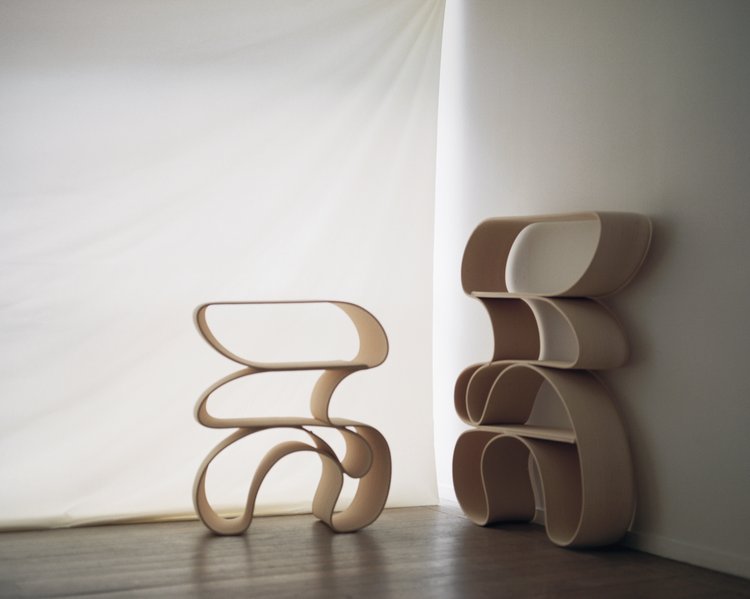The exhibition "Garland" is realised by Simon Mattisson and is presented as part of Romanian Design Week with the support of the Embassy of Sweden.
Granland is circular furniture production, a new material, an exploration of form in a new production method, and the use of design as a means of communicating an ongoing environmental problem. As a symptom of global warming, a half-a-centimetre-sized beetle, the Spruce Bark Beetle, has ravaged European forests in recent years. In Sweden alone, 27 million cubic meters of spruce forest have died since 2018, when the attacks began due to a severe drought. This has so far cost Swedish forest owners approximately 12 billion SEK in lost timber value. The future looks bleak; Sweden is getting increasingly warmer and the Spruce Bark Beetles are multiplying at an alarming rate. At present, there are no effective measures to protect our forests from the damage caused by this beetle. Simon has developed a wood composite that contains bark beetle damaged spruce wood for 3D printing. With the help of this material, he has designed and produced a collection of furniture, inspired by the patterns that the bark beetles leaves under the surface of the spruce bark. Partly to show alternative uses for this damaged timber, and to use design as a means of raising awareness, communicating the Spruce Bark Beetle problem.

The collection is designed with a proprietary design methodology for LSAM-production. The furniture is all made in one solid piece, with 0% waste. All furniture- and material production is done in Sweden. All pieces of Granland furniture are bio-degradable and 100% circular, meaning you can easily melt a shelf down and produce a new one with 100% of the original material.

The form language comes from an ambition to find mutual ground between two such wildly different things as the patterns dug by the Spruce Bark Beetle and large-scale additive manufacturing (LSAM), with the goal of creating something truly unseen, if such a thing is possible. The ambition of Granland is to overthrow outdated conceptions about what a piece of furniture is and can be, what really is sustainable production – and – doing so with physical form that hasn’t been possible until now.

Granland is part of the Wooddlife project produced in 2024 by the Swedish Institute in collaboration with Architects Sweden, Swedish Wood, the Swedish Wood Award, and the Swedish Forest Industries, with the support of Svensk Form and the Swedish Federation of Wood and Furniture Industry (TMF). The exhibition Woodlife Sweden presents how architects and designers work innovatively with wood, a timeless and renewable raw material that — in Swedish architecture — meets with the latest technology. 40 projects, in various scales and from all over Sweden, have been selected to visualise how architecture, design and urbanism can help reduce the climate impact of buildings and products, and impact future development in line with the 17 Sustainable Development Goals (SDGs). The projects presented in the Woodlife Sweden exhibition are all facing the looming paradigm shift in the construction industry, where wood as the only renewable building material plays a key role.

Wood is the only renewable building material, and the wood industry is therefore at the centre of sustainable development. But the industry cannot meet the challenges alone – only by close collaboration with architects, designers, engineers, and academia can innovation be pushed beyond current limitations and be directly implemented into building processes for more sustainable cities. A sustainable society also takes care of the forest as a renewable and living resource. In Sweden, the use of wood and forests have been protected by law since 1903, and when a tree is taken down, at least two new trees are planted. The forest can generate material for many new buildings as well as other material for a sustainable city, including packaging and fabric. Forests make up to 70 per cent of Sweden’s area and forest products have long been one of Sweden’s long tradition of using nature’s raw materials in the built environment, which is clearly visible in Swedish architects’ views on construction. Wood is a timeless and renewable raw material that meets the latest technology in Swedish wood architecture, and today reduces the construction time significantly. Architects, designers, and urban planners are accustomed to combine innovation and experience based on cultural heritage and skills to create unique spaces and objects.

Granland is an example of fitting a business model with circular thinking means starting at the beginning, with design and planning. About 80–90 per cent of the conditions for recycling are created during the design process. Circularity requires some level of recycling in manufacturing, using local materials to avoid long transport routes, and reusing materials. Wood’s predisposition to be used circularly is an additional dimension of its environmental benefits. Wood is the only renewable building material available, and it fits perfectly into a circular system, both within production and from forest back to forest. The furniture design have come a long way in using recycled or sustainable design in new production, and inspire others to follow suit.
The exhibition "Garland" is part of RDW Design Flags.
